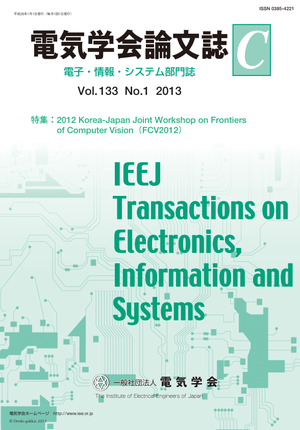Cascaded Subband Energy-Based Emotion Classification
Cascaded Subband Energy-Based Emotion Classification
カテゴリ: 論文誌(論文単位)
グループ名: 【C】電子・情報・システム部門
発行日: 2013/01/01
タイトル(英語): Cascaded Subband Energy-Based Emotion Classification
著者名: Senaka Amarakeerthi (Spatial Media Group, University of Aizu), Chamin Morikawa (Interfaculty Initiative in Information Studies The University of Tokyo), Tin Lay Nwe (Institute for Infocomm Research), Liyanage C. De Silva (Faculty of Science, University of
著者名(英語): Senaka Amarakeerthi (Spatial Media Group, University of Aizu), Chamin Morikawa (Interfaculty Initiative in Information Studies The University of Tokyo), Tin Lay Nwe (Institute for Infocomm Research), Liyanage C. De Silva (Faculty of Science, University of Brunei Darussalam), Michael Cohen (Spatial Media Group, University of Aizu)
キーワード: emotion classification,hidden Markov model,sentiment analysis,subband filters,subband energy
要約(英語): Since the earliest studies of human behavior, emotions have attracted attention of researchers in many disciplines, including psychology, neuroscience, and lately computer science. Speech is considered a salient conveyor of emotional cues, and can be used as an important source for emotional studies. Speech is modulated for different emotions by varying frequency- and energy-related acoustic parameters such as pitch, energy, and formants. In this paper, we explore analyzing inter- and intra-subband energy variations to differentiate six emotions. The emotions considered are anger, disgust, fear, happiness, neutral, and sadness. In this research, Two-Layered Cascaded Subband Cepstral Coefficients (TLCS-CC) analysis was introduced to study energy variations within low and high arousal emotions as a novel approach for emotion classification. The new approach was compared with Mel frequency cepstral coefficients (MFCC) and log frequency power coefficients (LFPC). Experiments were conducted on the Berlin Emotional Data Corpus (BECD). With energy-related features, we could achieve average accuracy of 73.9% and 80.1% for speaker-independent and -dependent emotion classification respectively.
本誌掲載ページ: 200-210 p
原稿種別: 論文/英語
電子版へのリンク: https://www.jstage.jst.go.jp/article/ieejeiss/133/1/133_200/_article/-char/ja/
受取状況を読み込めませんでした


